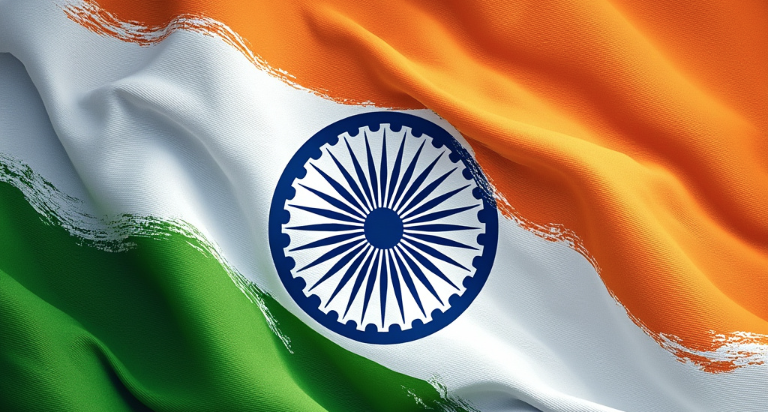India at 78: A Nation on the Cusp of Global Transformation

As India commemorates its 78th Independence Day, we are drawn back to that momentous day on August 15, 1947, when the nation cast off the yoke of British colonial rule after nearly two centuries. The birth of a sovereign India marked not only the end of an era but also the beginning of an extraordinary experiment in democracy—one that continues to evolve and hold the promise of a brighter future.
Did you know that India, with its vast and intricate cultural mosaic, recognizes 22 official languages, including Hindi, Bengali, Tamil, and Telugu? Despite this linguistic diversity, English remains a vital thread, weaving together the nation’s commerce and connecting its disparate regions—a testament to India’s unique ability to embrace both tradition and modernity.
Economic Development and Future Potential
From its inception as a newly independent state, India has charted a path of remarkable economic transformation. What was once an agrarian economy plagued by poverty and underdevelopment has now emerged as one of the fastest-growing major economies in the world. This economic ascent is driven by a booming technology sector, a burgeoning middle class, and a youthful, dynamic population eager to carve out a new future.
Yet, India’s journey is far from over. With a population nearing 1.4 billion, India is on the cusp of surpassing China as the world’s most populous country. This demographic advantage—if harnessed wisely—could propel India to the forefront of global economic leadership, potentially positioning it as the largest economy by mid-century. However, this growth is not without its challenges. India’s democratic fabric, while resilient, is tested by socioeconomic disparities, infrastructure gaps, and the pressures of rapid urbanization. Despite these hurdles, the nation’s long-term trajectory suggests a potential to emerge as a global powerhouse, much like the United States, fueled by its rich human capital and deepening democratic roots.
India’s Independent and Evolving Foreign Policy
India’s foreign policy has historically been defined by its non-aligned stance, a doctrine rooted in the post-colonial aspiration to chart an independent course amidst the geopolitical tides of the Cold War. This approach fostered strong ties with the Soviet Union, and later Russia, relationships that have endured through decades of global shifts.
However, the world is changing, and so is India’s place within it. Russia’s increasing alignment with China—now seen by many as a quasi-satrapy—has sparked concern in New Delhi. China’s long-standing support for Pakistan, India’s principal adversary, only deepens the complexities of this geopolitical equation. In response, India has astutely recalibrated its alliances, strengthening its strategic partnerships with the United States and other democracies. This evolving foreign policy reflects India’s desire to assert its influence in a rapidly shifting global order, balancing traditional relationships with new realities.
Demographic Milestone
India stands at the brink of a profound demographic transformation, poised to become the most populous nation on Earth, surpassing China. This milestone carries significant implications—not only for India but for the world. With nearly one-eighth of humanity soon to be Indian, the nation faces both extraordinary opportunities and formidable challenges.
This demographic shift offers a vast reservoir of human capital that, if effectively mobilized, could drive unprecedented economic growth and innovation. However, the path forward is fraught with obstacles. The strain on infrastructure, education, and employment systems will require visionary leadership and robust policy frameworks to ensure that this population boom translates into sustainable development. India’s ability to navigate these complexities will be crucial in shaping its future role as a global leader.
Advancements in Science and Space
India’s contributions to mathematics and the sciences are woven deeply into the fabric of its history, from ancient treatises on algebra and astronomy to the cutting-edge research of today. This legacy is most vividly embodied in the achievements of the Indian Space Research Organisation (ISRO), which has propelled India to the forefront of space exploration.
In 2013, ISRO made history with the Mars Orbiter Mission (Mangalyaan), becoming the first nation to reach Mars orbit on its maiden attempt—an achievement that stunned the world and underscored India’s growing technological prowess. ISRO’s ongoing lunar missions, including the ambitious Chandrayaan program, further solidify India’s status as a leader in space exploration. These accomplishments are not merely feats of engineering; they reflect the nation’s broader commitment to scientific inquiry and its aspiration to push the boundaries of human knowledge.
Geopolitical Realities and Border Tensions
Amid its many triumphs, India faces persistent challenges along its borders, particularly with China and Pakistan—nations with whom it shares a history of deep-seated rivalry. The tensions with Pakistan, rooted in the bitter legacy of partition in 1947, have led to four wars, each conflict reinforcing the nuclear-armed status of both nations and casting a long shadow over the region.
Meanwhile, the ongoing standoff with China along the Line of Actual Control (LAC) remains a flashpoint of concern. The 2020 Galwan Valley clash, where both sides—adhering to an agreement to forego firearms—engaged in brutal hand-to-hand combat, starkly illustrated the volatile nature of this relationship. Yet, in the face of these challenges, India remains steadfast, resolutely defending its sovereignty while navigating a complex and often perilous geopolitical landscape.

